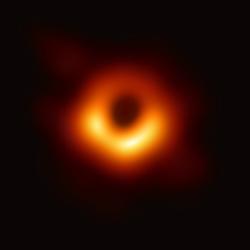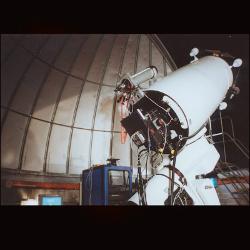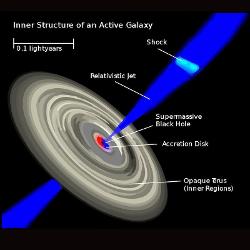Cosmic Fantastic Beasts
If you look up at the night sky on a warm summer evening, low on the southern horizon is a collection of stars that resembles a teapot. This is the constellation Sagittarius, and if you look towards the spout, you are looking in the direction of the center of our galaxy. Hiding behind the layers of gas and dust in between us and the galactic center, there is a black hole lurking at the center of our galaxy. Our galaxy is not unique in this aspect; all galaxies have black holes at their centers. In some, the black hole is billions of times more massive than our sun and is actively feeding on gas and dust in its area; we call these active galactic nuclei (AGN). The incredibly strong gravity from these beasts causes the material they are feeding on to build up into a disk and as it moves through the disk towards the black hole, some of the material is able to escape the beast and shoot off into space. This material is very energetic and moves nearly at the speed of light-we call the structures created by this material relativistic jets. If we are fortunate enough to have the jet aligned almost along our line of sight, it outshines the rest of the galaxy and we have the most exotic and fantastic form of AGN known as a Blazar.
Using WKUs' Bell Observatory, Robotically Controlled Telescope, and space based telescopes, Dr. Michael Carini and his students are studying how these jets change their brightness with time. Using this information, they are able to understand the structure and energetics of these fantastic beasts hiding at the centers of galaxies
A community of faculty, staff, and students engaged in better understanding the physical world.








